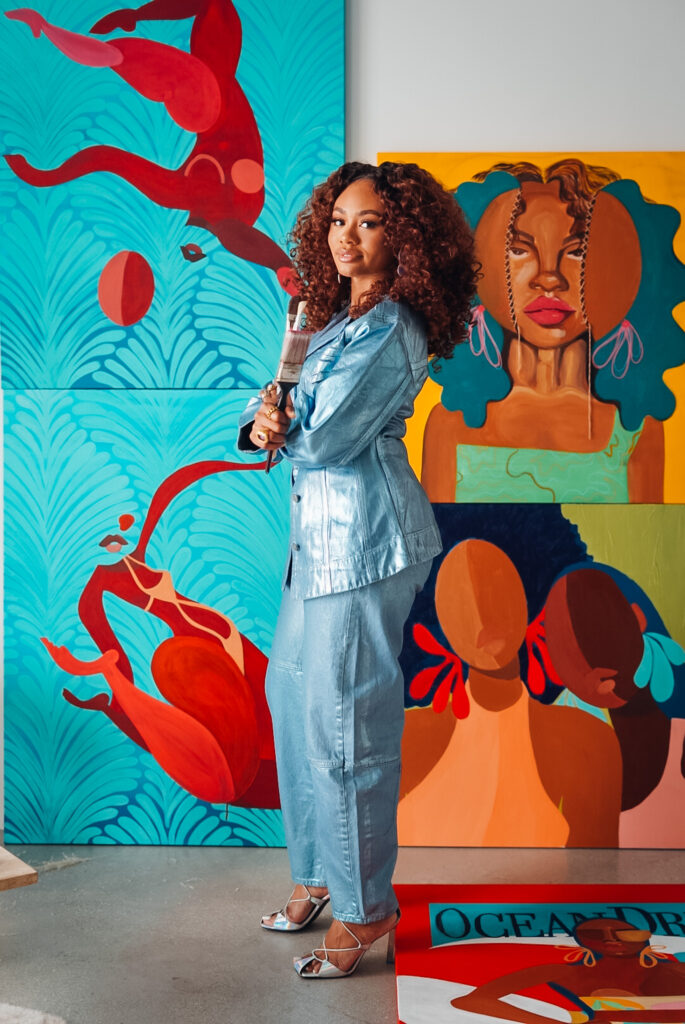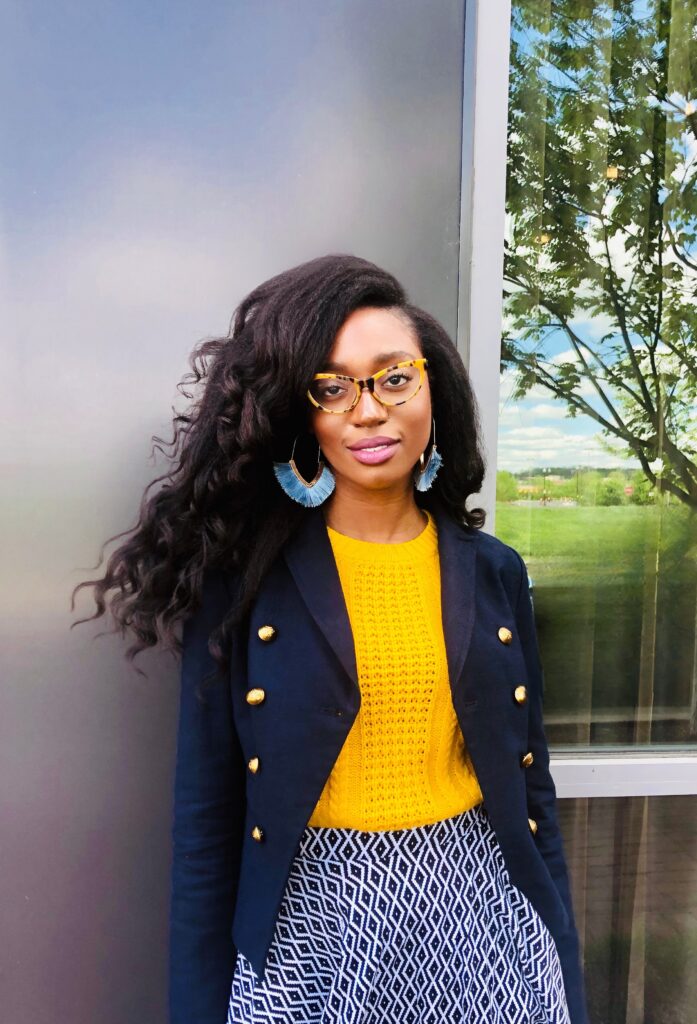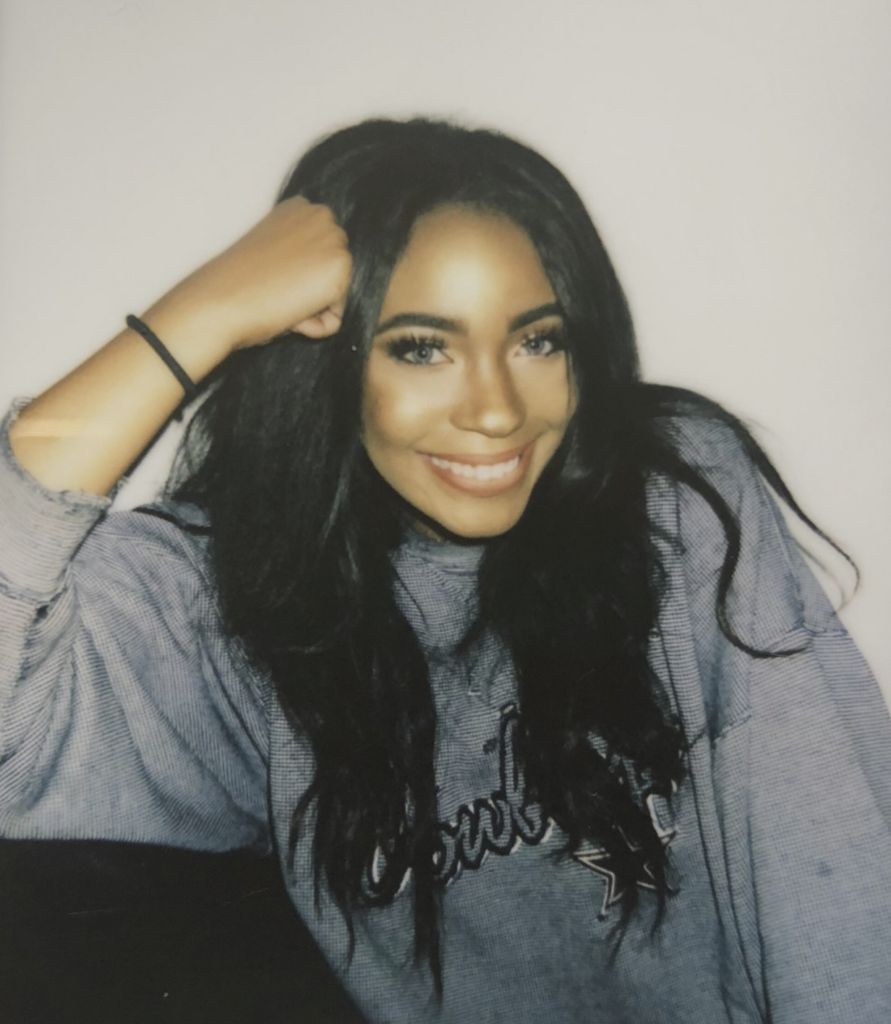How These 3 Black Female Artists Are Changing the Face of Digital Art
The following three Black female artists all have one thing in common: Their vibrant digital art features joyful depictions of women of color.
These artists have each forged an impressive career in art that is both unique and authentic. Read on to discover how these talented Black female artists have made their mark in the digital art world and what they’ve learned along the way.
1. Reyna Noriega, owner of Reyna Noriega Studios

Miami native Reyna Noriega’s artwork reflects the sunny South Florida neighborhood she grew up in. She attended Florida International University, earning a degree in psychology. Though she had dabbled in photography and drawing in high school, she didn’t start creating digital art until after she had taken a position as a high school art teacher. Since diving into digital design, Noriega has landed a cover on The New Yorker and an Old Navy collaboration.
“My Old Navy Black History Month tee in 2021 was a major moment because it was so accessible to so many people,” she says. “Seeing people wear them on family reunions and vacations [and] parents telling me it was their toddler’s favorite shirt… was such an amazing feeling.”
A hallmark of Noriega’s work is bright portraits of women whose skin tones range from caramel to mahogany. In many of these portraits, the women are dancing, resting or embracing each other.
“So often [as women of color], our narratives center our trauma and sacrifices,” Noriega explains. “I wanted to create work that celebrated our confidence [and] beauty and our right to experience peace and joy.”
Noriega’s path to an art career isn’t a conventional one. Though she didn’t attend formal art school, she says that one of the most important lessons for budding artists to learn is the business side of art. It’s important for them to consider different avenues for making and selling their art.
“Some aspects of art success, like fine art and gallery representation, are not as easy to control. It might depend on where you received your MFA or who you know,” she explains. “But there are so many facets of art you can make an income from, such as licensing, pattern design, editorial illustration and so much more. [It’s also important] to market [yourself] and share [your] work in as many ways as [you] can, such as social media, online platforms and local art communities.”
Noriega has followed her own advice to diversify her income. She is also the author of a poetry book, In Bloom, and on her website, she offers fine art alongside journals and home goods.
“I love the freedom of expression,” she says. “I love the practice of creating and learning to see the world and my experiences in new ways.”
2. Justine Kirkman, owner of Winnie Weston

After a career in media and recruiting, Justine Kirkman founded her illustration business Winnie Weston, which is an ode to her grandfather, Carl Weston Winfield (known by his family as Winnie), who passed away in 2020. Kirkman’s work is inspired by pop culture, and she credits shows like “Living Single,” “Insecure” and “A Different World” for inspiring her playful designs.
Along with these iconic Black sitcoms, she’s also inspired by “nostalgic ‘90s/early [‘00s] R&B and pop songs,” the D.C.-based artist explains. “I’ll listen to the songs and immediately want to create an art collection that feels like that mid-‘90s Clueless era of fashion.”
Kirkman was recently asked to create a collection for Target’s Black History Month collection, which included physical art prints and a paint-by-numbers set.
“I absolutely love Target, so to be able to work with the Target team and having the freedom to create a collection for them, and then to walk into such an iconic brand and see my art—it’s mind-boggling,” she says. “[I also received] messages from people saying that they now have a hobby in painting because of the paint-by-numbers [set].”
Though she’s had impressive success early into her career as an artist, Kirkman explains that it’s often an uphill battle for Black artists who have to prove that their art can have a universal appeal.
“[Black artists] are paid less than our white counterparts,” she says. “This challenge is extremely frustrating for us because we can have great engagement [and] great brand awareness and have a beautiful product to provide brands, but at the end of the day, brands will still pay us less because they feel we don’t offer as much to the broad[er] audience.”
Still, Kirkman has stayed true to her vision of creating art for Black women and for the younger version of herself who wanted to see herself represented in art. She describes her art as “colorful, stylish and [unapologetically] Black.”
“My main desire when creating art is to make Black women feel seen, heard, beautiful, loved and shown in the best of the light,” she said. “We are so beautiful. As Black women, we create style; we create the trends…. [My goal is to create art that highlights] our big curly hair, braids our skin and more.”
3. Tatyana Alanis, owner of French 75 Studios

Based out of Fort Worth, Texas, graphic designer Tatyana Alanis stands out with her moody, comic book aesthetic. Alanis grew up in Anaheim, California, and says she was always drawing as a kid. Her first drawings were on an Etch a Sketch-like tablet, and in elementary school, she won several art competitions. Today, Alanis designs under her brand, French 75 Studios, which she named as a nod to the classic Parisian cocktail.
Alanis describes her work as “nostalgic” and “romantic,” and credits artists like cartoonist Will Eisner, illustrator and cartoonist Jillian Tamaki and world-famous animator Walt Disney as her inspiration.
Alanis’ art blew up on Instagram during the pandemic. While others turned to knitting, gardening and baking, the artist took to social media and started sharing her work anonymously, quickly amassing several hundred thousand followers. Brands took notice—some of Alanis’ past clients now include Google, The New Yorker and a collaboration with Coca-Cola in New York’s Times Square.
As she contemplates her career, Alanis says she’s created a lane for herself in a category of digital illustration that’s not always associated with Black artists.
“As a Black artist, it’s hard to break out of what is expected,” she explains. “Not a lot of Black women are trying to break into [the] graphic novel [and] graphic illustration style space.”
Alanis’ work is also unique in that it evokes a comforting nostalgia. A glance through her portfolio reveals quiet scenes of everyday life: a young woman reading under the glow of a warm lamp, a row of brownstones on a snowy day and a couple reading on a subway. Although there’s an emphasis on relationships in many of her drawings, Alanis’ work tends to highlight the beauty of solitude, which mirrors her creative process.
“It’s amazing getting to meet so many people and creat[ing] beautiful relationships,” she says. “[But] I enjoy the solitude and the ability to create the art that I want to see in the world.”
Photo by Tatyana Alanis.
The post How These 3 Black Female Artists Are Changing the Face of Digital Art appeared first on SUCCESS.
from SUCCESS https://ift.tt/dK8UoRB
Comments
Post a Comment